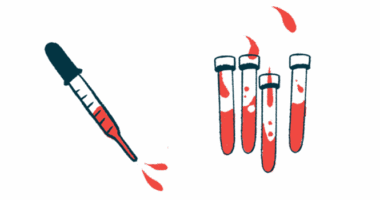Epysqli safety and efficacy similar in Asian, non-Asian PNH patients
Study analyzes Phase 3 trial data that supported regulatory approvals

Epysqli (SB12), a biosimilar of Soliris (eculizumab), is comparable in safety and efficacy for Asian and non-Asian patients with paroxysmal nocturnal hemoglobinuria (PNH).
That’s according to a post-hoc analysis of the pivotal Phase 3 SB12 study (NCT04058158), the findings of which supported Epysqli’s approval in the U.S. and the European Union (EU). The EU approval followed a positive recommendation from the EU’s Committee for Medicinal Products for Human Use.
The study, “EPYSQLI (SB12; Biosimilar to Reference Eculizumab) in Asian and Non-Asian Patients With Paroxysmal Nocturnal Hemoglobinuria: Subgroup Analysis of a Global Phase III Randomized Controlled Trial,” was published in eJHaem.
Soliris, an antibody-based treatment, is approved for adults and children with PNH, regardless of prior blood transfusion history. Epysqli received approval for a similar indication. A biosimilar is a biologic medicine that closely resembles an approved reference product and is developed to match its quality, safety, and efficacy.
The active component in both Soliris and Epysqli is eculizumab, which targets the complement protein C5. The complement system is part of the immune system; in PNH, this system is overactive, contributing to the destruction of red blood cells. Eculizumab works by binding to C5 and blocking its cleavage, thereby inhibiting complement activation and reducing red blood cells’ destruction, or hemolysis.
Similar reductions in LDH
Data from the SB12 study and a prior Phase 1 study confirmed that Epysqli showed equivalent pharmacological properties and safety profile to Soliris. In this post-hoc analysis of the SB12 study, researchers compared the effectiveness and safety of Epysqli and Soliris in Asian patients versus non-Asian patients.
The trial enrolled 50 patients, ages 18 and older. They were randomly assigned to receive Epysqli or Soliris, delivered as an into-the-vein infusion, at a dose of 600 mg every week for the first four weeks, followed by 900 mg for the fifth week, and then 900 mg every two weeks as a maintenance regimen. After 26 weeks (about six months), patients were switched to the other regimen until week 50 (nearly a year).
Of the 50 enrolled patients, 27 were Asian (54%), 15 of whom were randomly assigned to first receive Epysqli and 12 to start with Soliris. Among the 23 non-Asian patients, 10 were randomly assigned to get Epysqli first, while the other 13 started with Soliris.
The trial’s main goal was to evaluate the effect of treatment on lactate dehydrogenase (LDH), a marker of cell and tissue damage often used to assess PNH disease activity. The analysis showed that the levels of lactate dehydrogenase were similar between both treatments in both Asian and non-Asian patients.
Similar to what was observed for the overall patient population, LDH levels were significantly reduced after the first dose in Asian and non-Asian participants alike, and the mean LDH levels remained below twice the upper limit of normal from week 3 through the end of the study.
The median number of blood transfusions throughout the study period was similar between the group of Asian participants (median 26 units of red blood cells) and the non-Asian group (median 23 units of red blood cells), comparable with what had been observed for the overall study population.
Among Asian patients who started treatment with Epysqli, eight patients did not require blood transfusions for the first 26 weeks, and in the second half of the study after switching to Soliris, 10 were free from transfusions. Of the Asian patients who started with Soliris, five didn’t need transfusions in the first 26 weeks, and six didn’t need transfusions in the second 26 weeks after switching to Epysqli. Similar results were seen among non-Asian patients.
“Overall, transfusion avoidance results in the whole study population and by race subgroup appeared consistent with historical data on [Soliris], with no clinically significant differences,” the researchers wrote.
No significant differences were detected in the levels of hemoglobin, the protein that carries oxygen in red blood cells, between Epysqli and Soliris in Asian versus non-Asian participants.
The number of treatment-related side effects was numerically higher in Asian patients than in non-Asian patients (30.8% vs. 13%), largely due to there being more Asian patients who experienced infusion reactions. Nonetheless, the overall safety findings in both racial groups were consistent with those previously reported in the overall population and with the known safety profile of Soliris.
Overall, this “analysis by race (Asians and Non-Asians) supports comparable efficacy and safety between SB12 and reference [Soliris] in global PNH patients including no difference in transfusion avoidance effect,” the researchers concluded.








